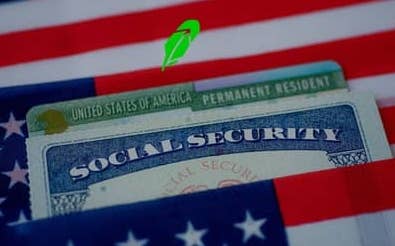Some links in this post are from our partners. If a purchase or signup is made through our partners, we receive compensation for the referral.
Are you worried that you may have over-contributed to your TFSA?
If so, you might be wondering – how do I even know if I’ve over-contributed to my TFSA?

After all, over-contributing to your TFSA comes with a 1% monthly tax penalty, so if you have over-contributed, you’d certainly want to know!
Additionally, internally debating with yourself on if you’ve over-contributed to your TFSA or not can take a toll on you emotionally.
With that said, to avoid these potential physiological and financial effects, you need to know if in fact you’ve contributed to your TFSA in excess.
Here is How You Know if You’ve Over-Contributed to your TFSA:
If you haven’t received a letter from the CRA yet, but you think you may have over contributed, you should compare your TFSA contribution room (given by the CRA) with your TFSA contributions (given by your TFSA issuer) and ensure your TFSA contributions are less than your TFSA contribution room.
With that said, the CRA should also send you a TFSA Excess Amount letter and the purpose of this letter is to notify you that you have over-contributed to your TFSA.
Open a TFSA with Wealthsimple Invest Today ($25)

Earn a $25 Bonus with Sign – Up
- Tax-Free investment income
- No account minimum
- 100% free to sign-up
- Wealthsimple is designed for beginner investors
- Wealthsimple invests your money for you
The CRA will send you a TFSA Excess Amount Letter
You will know with certainty that you’ve over-contributed to your TFSA if you receive a excess amount letter from the CRA.
If you receive this letter, you may also receive what’s called a proposed TFSA return package.
This TFSA return package will include instructions on how to properly react to your over-contribution.
It will also include the taxes owed to the CRA which is based on your over-contribution amount – we will talk more about this shortly.
Here is a PDF of what the return looks like exactly.
But, before doing anything else, including using the washroom or getting a pop tart, WITHDRAW YOUR EXCESS AMOUNT.
I can’t stress this enough. When you are notified by the CRA that you’ve excessively contributed to your TFSA, immediately withdraw your excessive funds to avoid additional tax penalties.
If you don’t already have a TFSA open, I’d recommend opening one up with Wealthsimple. My article here talks about 9 benefits of opening a TFSA with Wealthsimple.
Open a TFSA with Wealthsimple Invest Today and Earn a $25 Bonus with your sign up.
Compare your TFSA Contribution Room with your TFSA Contributions
Okay, so if you think you might have over-contributed to your TFSA but you haven’t received any type of notification from the CRA yet, it might be a good idea to check the numbers yourself.
Here is How To Know if You’ve Over-Contribute to Your TFSA or Not
Step 1 – Check your Annual TFSA Contribution Room on your CRA online account.

Step 2 – Check your total TFSA contributions for the current calendar year. You can get this exact number from your TFSA issuer.
Step 3 – Subtract your total TFSA contributions for the calendar year from your Annual TFSA contribution room.

If the sum is greater than $0, nothing to worry about. You still have contribution room available.
If the sum is less than $0, you know you’ve over-contributed to your TFSA.
Step 4 – If you’ve over-contributed to your TFSA, withdraw your excess amount and don’t deposit any more funds into your TFSA until the following year.
Quick Note #1 – If you’ve already withdrawn your over-contribution amount from your TFSA by the time you receive an excess amount letter, you can ignore it as you don’t need to do anything else.
What is the Penalty for Over Contributing to Your TFSA?
Simply put, if you over-contribute to your TFSA, you will be charged a 1% tax penalty per month. This tax is based on the highest amount of excess contribution you had in your TFSA for that month.
So for example, let’s say your TFSA contribution room for 2020 is $10,000.
On July 1st of 2020, you decide to make your first contribution of the year and deposit $12,000 into your TFSA. While saving is great, you’ve unfortunately over-contributed to your TFSA by $2000.
Let’s analyze this situation in three different ways.
* Each of these scenarios assume you don’t contribute anymore into your TFSA after your initial $12,000 deposit.
Situation 1 – You are notified about your over-contribution before the month of July finishes and you withdraw your $2,000 excess amount on July 29th.
Because you acted fast, you TFSA only showed excess contributions for one month and therefore your tax penalty will only be $20 ($2,000 x 1%)
Situation 2 – You are unaware that you over-contributed to your TFSA and you fail to withdraw your excess contributions at all.
If this is the case, your total penalty will equate to $120.

As you can see, the 1% penalty is taxed each month that the excess amount remains in your TFSA.
After the current year, the new annual TFSA limit will likely absorb your excess contribution and your penalty tax will stop accumulating – assuming your excess contribution amount is less than the new annual TFSA limit.
Situation 3 – If you realized on October 15th of 2020 that you over contributed to your TFSA back in July, then your total tax penalty would equate to $80 – as long as you withdrew your excess amount before October 31st.

As you can see, this is pretty straight forward. But if you are still a little confused on how the tax penalty is calculated, that’s okay. Just remember this.
Your tax penalty for over contributing to your TFSA is a monthly fine that equates to 1% of your excess amount.
In other words, multiply your excess contribution amount by 1% for each month you leave it in your account.
Once you withdraw your excess funds, the tax penalty stops and you can move on with your life!
Quick Note #2 – It’s important to note that your tax penalty is based only on your over-contribution amount and not your total TFSA contribution amount.
If your TFSA contribution room is $10,000 and you contribute $12,000 then your tax penalty is only calculated on the $2,000 excess. ($12,000 – $10,000 = $2,000)
Conclusion
To conclude, if you want to immediately check to see if you’ve over-contributed to your TFSA, I’d suggest just comparing your TFSA contributions to your contribution room.
If your TFSA deposits (Check with your TFSA issuer) are less than your TFSA contribution room (Check with CRA Online Account), you’re in the clear, not to worry.
If you don’t bother checking, don’t worry, the CRA will send you an Excess Amount letter to inform you that you’ve over-contributed to your TFSA.
The only downside of waiting for the CRA to inform you is that your notification could get lost along the way and this could cost you.
At the end of the day, unless you over-contribute a significant amount, a 1% tax penalty shouldn’t cost you too much money – so don’t panic either way.
Plus, if you’ve managed to contribute too much money to your TFSA, then you’re probably doing okay financially and a small tax penalty probably won’t drown you.
But still, try to avoid over contributing as the hassle of withdrawing your excess amount and paying your tax penalty is worse than the fine itself!
Okay my good friends, shows over!
Geek, out.








One Comment
Comments are closed.